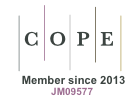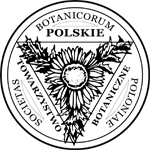Abstract
Studies on flowering of Hierochloë repens were performed over the years 2005-2007 in five habitats located in Bydgoszcz. The first habitat is a degenerated fresh ryegrass meadow (Arrhenatheretum elatioris). Another one is a degenerated form of initial xerothermic swards (Tunico-Poetum compressae). The third habitat in which the occurrence of Hierochloë repens was found and flowering was analyzed is sandy sward (Koelerio-Corynephoretea). Yet another habitat is ruderal in character and it was located on the side of the road (Convolvulo-Brometum inermis). The last one is a fertile and moist habitat of elm-ash marshy meadow being gramineous herb fringe communities in character. The evaluation was based on the following analyses: morphological characters of inflorescences (length of inflorescence, stem length, number of inflorescence branches and number of spikelets), stem and inflorescence weight and reproduction effort as well as the share of generative individuals in the population and the number of generative individuals per m2. Differences were found in the structure of Hierochloë repens inflorescence in the habitats analyzed. The biggest inflorescence, in terms of all the characters analyzed, was found in fertile elm-ash marshy meadow, and the smallest in poor xerothermic sward. The highest generative reproduction potential of Hierochloë repens was found in the ruderal habitats. They are the basic potential source of generative diaspora production, which can affect the spreading of this species in Poland.
Keywords
Hierochloë repens; flowering; habitat






